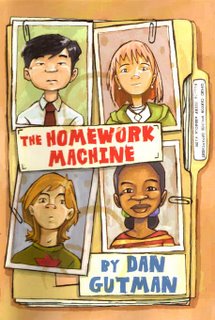
by Karen Hesse
Scholastic 1996
A teen-aged girl, a wild child, is found on an island off the coast of Florida. Named Mila by the Coast Guard crew who discover her, she is quickly handed over to a small group of scientists for further study. Unlike other feral children Mila exhibits a quick intelligence and the apparent ability to understand, if not communicate with, dolphins. There's a reason for this, as Mila explains how she was raised by a pod of dolphins who rescued her at the age of four when the boat carrying her and her mother was capsized.
Not that any of this information comes out so clearly. From the beginning Mila needs to be taught human speech and language, she learns to use a computer to keep a diary, and piece by piece she acquires the vocabulary necessary to communicate to the scientists around her. Early journal entries are in large type and stilted sentences, though her thought process and ideas are pushing to make her verbal skills catch up. She clearly thinks and knows more than she can say.
The more Mila learns, and the more she learns about terrestrial humans, the less she understands. Moved to a safe study house in Boston she doesn't understand why she can't swim the Charles River naked whenever she feels like it, why she must remain locked up in the house. She is happy to "perform" the tests and tasks asked of her, finds a common language in music and the song of the dolphins and whales, so much so that a creeping melancholy begins to take hold. It is clear that as time goes on she becomes less enchanted with her life on land and homesick for her life among the dolphins.
There are other complications as well. The lead scientist, Doctor Beck, hopes to use Mila as a link between communicating with dolphins, to learn the language of the cetacean world. Dr. Beck's son Justin, a teen himself, disagrees with his mother's motives and tries to answer some of the social questions Mila doesn't quite understand. In Justin Mila senses a stirring that causes her to think about mating and her family in the sea and the confusion between knowing her place in the world. Her journal entries begin to decrease, Mila becomes defiant, finally she begins to regress into a depression. In the end there is little else to do but return Mila to the sea... but can they?
At first blush using Mila's voice to tell the story Hesse draws comparison with Flowers for Algernon. As Charlie Gordon's voice and vocabulary grows in Daniel Keyes's story, so does Mila's but with one important difference; From the first page Mila is shown as having knowledge and vocabulary of her life among the dolphins, an almost poetic song similar to those of the cetaceans she's lived with. Mila's struggle isn't about a shift in intelligence but acquiring a new language with which to communicate. It's also about the struggle of trying to understand human emotions and behavior after having almost no contact with humans for most of her life.
To make the distinction clearer Hesse has included Mila in a small study area with Shay, another feral child, a small girl who was discovered locked away in a dark closet for all of her short life. Having no exposure to any nurturing during her short life Shay never makes any progress while Mila always seems to exceed the expectations of her minders. Mila makes it clear in her various journal entries that the dolphin community is much stronger than even most humans experience and that appears to make all the difference. It is also the underlying reason why Mila could never be happy on land.
The question in the end is whether the most responsible thing is to return Mila to her dolphin pod or force her to adopt and adapt to the ways of her species. After reading The Music of Dolphins the answer is obvious, but it's unsettling to think about. Which makes it near perfect to these eyes.














